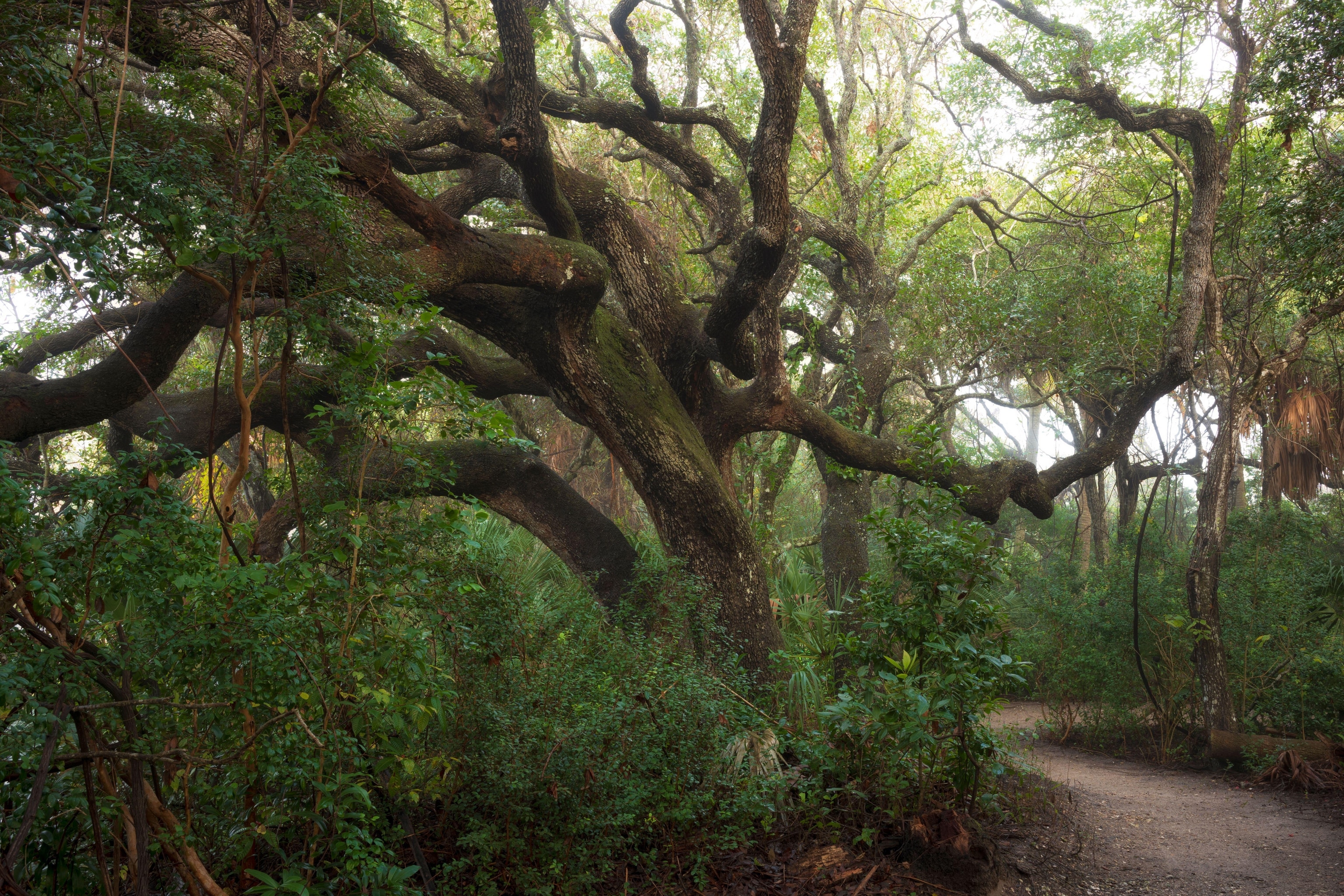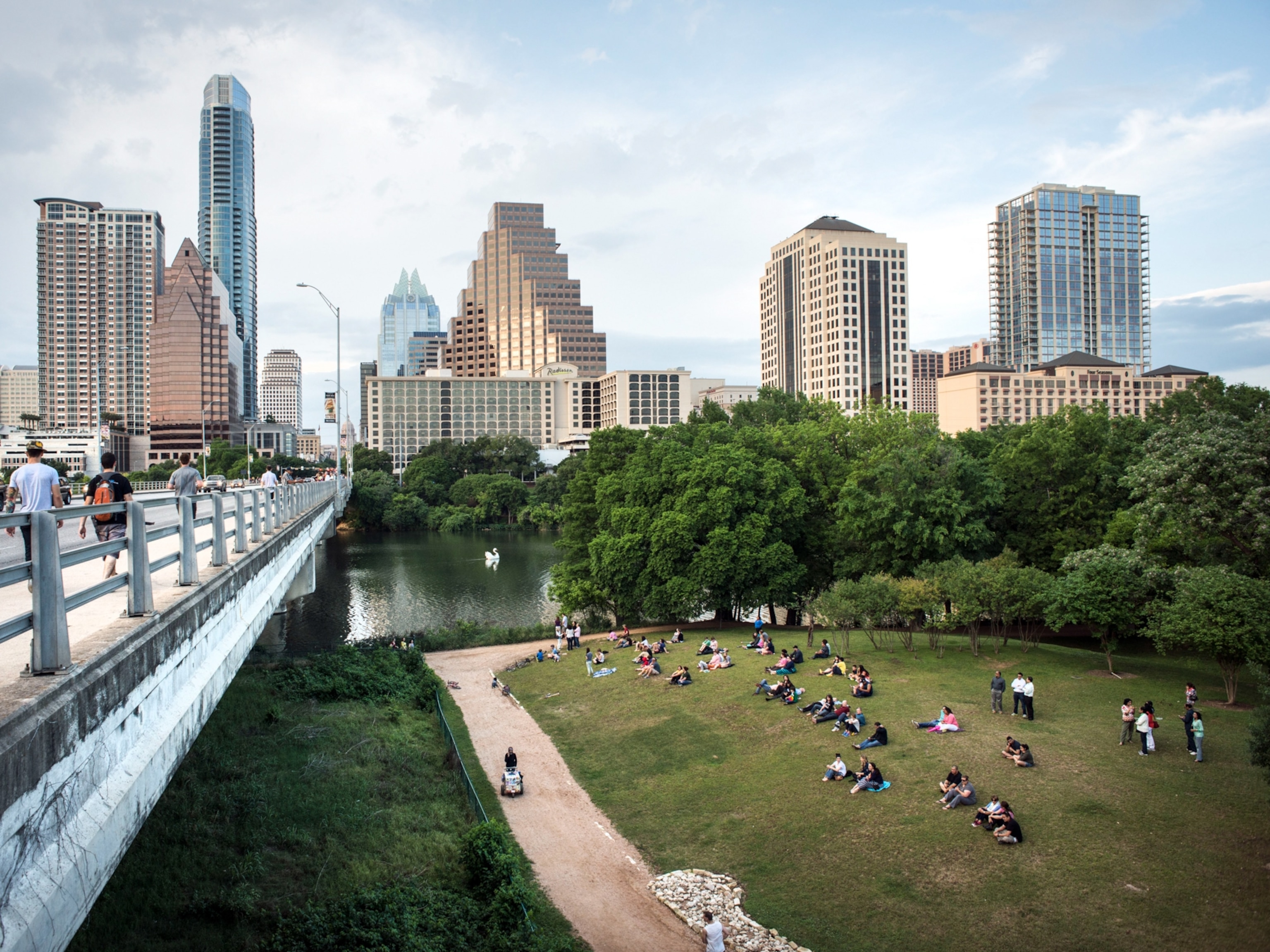
The essential guide to visiting Daytona Beach, Florida
Golden beaches, a lively new Riverfront Esplanade, historic neighborhoods, and a rich racing heritage set the city built on speed apart from the crowds.
Florida's famous beach town is steeped in auto-racing history and lore, but a vacation in Daytona Beach promises more than those miles of world-class beaches and the need for speed. Slow down for cultural attractions, lively riverside neighborhoods, pedestrian-friendly promenades for exploring, and a festival calendar that goes year-round.
Best time to visit Daytona Beach
Spring: Motorcycle crowds and full-throttle culture abound in late February and early March for Daytona Beach Bike Week, which often has some crossover with the spring breaker set. The passes through the area and during the springtime migration you might spot northern gannets, white pelicans, and piping plovers in the city’s coastal environments. In April, the Daytona Beach Arts Fest immerses downtown Daytona Beach in juried art, creative craftworks, live music, and more.

Summer: June, July, and August are primetime for casting a line (no fishing license required) off the 1,000-foot-long to try hooking local catch such as a pompano, sheepshead, or drum. July is one of the best months for surfing consistent waves at beach breaks all along Daytona Beach. Head out on an eco-tour on the Halifax River with On the Hook Charters to scout for dolphins, manatees, and myriad shorebirds.
Autumn: Mid-October’s Biketoberfest brings motorcycle enthusiasts back for live music, racing, and camaraderie. Saltwater fish species migrate south, and it’s a great time for offshore fishing for tarpon and sailfish as well as inshore fishing for speckled sea trout and snook with a charter company like Yellow Dawg Fishing. In November, the Halifax Art Festival spreads across downtown Daytona Beach featuring 150 artists who showcase their works. There’s also the lively St. Demetrios Greek Festival, full of dance, traditional music, and delicious Greek food.
Winter: Go kayaking and explore the wetlands in Tiger Bay State Forest, a habitat for black bears and a popular place for cycling and horseback riding on forest roads. The Daytona 500 roars into town in February. And the weather is perfect for a round of golf at one of the city’s world-class golf courses, like LPGA International.

Key areas to explore in Daytona Beach
The beaches: Daytona Beach was first dubbed “The World’s Most Famous Beach” in the early 1900s when its hard-packed, smooth sands became famous for automobile testing and among racing enthusiasts. Today, there are 23 beach parks and more than 20 miles of beaches to enjoy. In a nod to the days when people raced on the sand here, you can still drive a car (or even a golf cart) out on designated sections of the beach when you buy a beach driving day pass (there’s a strictly enforced speed limit, of course, and racing is no longer allowed).


Main Street: This is the heart of Daytona Beach’s entertainment district, where motorcyclists rumble past during bike events and frequent the legendary Boot Hill Saloon. Pedestrians stroll the palm-lined sidewalks to pop into shops, bars, and restaurants (French-inflected 35 Bistro & Wine Bar is a Sunday brunch favorite for Benedicts and avocado toast) that are stacked one after the other. On its eastern end, Main Street meets the Atlantic Ocean and the area’s busiest beach. Riverside Johnny’s, on its western end, overlooks the river and does a mean fish-smoked dip and grouper sandwich.
Riverfront Esplanade: Fronting the shimmering Halifax River, the Riverfront Esplanade stretches for a mile along the Intracoastal Waterway near and is a paradise for a stroll or a jog. Families gravitate to the splash pad (with picnic tables and a shaded area to relax) and there’s a dog park, botanical garden, and walking trails as well as restaurants and galleries facing the river to explore.
Daytona Beach Boardwalk District: Feel the ocean breeze in your hair, take in a live concert at the oceanfront Daytona Beach Bandshell, hit a classic arcade with the kids, or treat the family to go-karting and waterslide thrills at the Daytona Lagoon. In this family-friendly district, there’s also something happening.
Seabreeze Historic District: Between the Intracoastal Waterway and the beach on Seabreeze Boulevard, this is another lively district brimming with independent shops and restaurants like The Oyster Pub, a beloved local sports bar that’s been in business for more than 40 years.
.jpg)
Daytona Beach Midtown: Historic homes line this centrally located neighborhood southwest of the beach. It’s also home to Bethune-Cookman University, a historically Black college and university (HBCU). The Mary McLeod Bethune Performing Arts Center and Visual Arts Gallery regularly hosts operas, Broadway musicals, and other productions. The historic, four-acre Daisy Stocking Park, dedicated to a World War II nurse and the former chair of the Negro Division War Bond Drive, was recently upgraded to the tune of $2.6 million and has new pavilions, picnic tables, and a playground.
Speedway Gateway District: Come for Daytona International Speedway races, events, and tours—not to mention the obligatory pose for a picture with the Dale Earnhardt Sr. statue. Then let yourself be surprised by a cultural heavy-hitter here–the Smithsonian-affiliated Museum of Arts & Sciences, housing the largest collection of Florida art in the world as well as an impressive trove of Cuban and African art. The Motorsports Hall of Fame of America is a 20,000-square-foot space brimming with historic artifacts and vehicles. Also nearby, the One Daytona entertainment and lifestyle district has an indie coffee shop (Foxtail Coffee Co.) and more restaurants and shopping.
Where to stay
The Daytona, Autograph Collection: The racing-inspired design at this delight of a property right across from the Daytona International Speedway and within walking distance of One Daytona includes vintage cars and a Prohibition-era restaurant and bar that nods to the area’s racing roots. The outdoor pool with private cabanas is perfect for kicking back.
The Shores Resort & Spa: Daytona Beach’s best spot for oceanfront luxury, this hotel has rooms and suites with wide balconies overlooking the golden beach as well as the Intracoastal Waterway. At the onsite spa, treat yourself to a Balinese massage or ritual in the custom-designed Vichy shower.
Taste of Daytona Beach
With the Atlantic Ocean’s backyard bounty, seafood feasts are the culinary prerogative for many visitors. Hit the Ocean Deck for wild-caught grouper, Caribbean coconut shrimp and crab legs served up with live music and beach views. Chargrilled, raw, and Rockefeller oysters are a favorite among locals who flock to The Oyster Pub, also known for its peel-and-eat shrimp platters liberally seasoned with Old Bay. Brickyard Lounge’s legendary burgers on toasted brioche buns have a loyal following among the Speedway crowd (it’s 2.5 miles away). And you’ll never go wrong with the famous honey-flavored chicken wings and banana pudding at Bethune Grill.
Getting around Daytona Beach
By bus: Track the city’s energy-efficient Votran buses and their routes in real-time with the MyStop Mobile app. Routes cover the Daytona International Speedway, Daytona Beach Bandshell, Bethune Cookman University, and points all across town.
By car: With more than 130 public charging stations in Daytona Beach, you can get around the area easily in an EV car or standard rental. Public parking information and details on beach driving and parking can be found on the county’s website.
Here's what you should know
Wildlife Awareness: The summer months are stingray season in Daytona Beach, so do the “stingray shuffle” by shuffling your feet as a warning to potentially lurking creatures as you enter the water.
LGBTQ+: There’s no specific LGBTQ+-friendly neighborhood in Daytona Beach, as in many other Florida cities, but Daytona Pride is a good place to find the local LGBTQ+ community, events, and resources and the area.
Beach driving safety: The maximum speed for beach driving is 10 miles an hour and you should always keep your headlights on and windows down for safety.
How to visit Daytona Beach sustainably
Outdoors: When driving on the beach, never park atop areas with soft sand or vegetation. Bonfires are permitted on the beach when reserved in advance, from November 1 to April 24, outside of sea turtle nesting season. May 1 through October 31 is sea turtle nesting season. If you see a turtle crawling into or out of the ocean or laying eggs, keep a distance of at least 30 feet. Be careful not to shine lights on the beach during turtle nesting season, too, as it can disturb the animals. Never walk on beach dunes—the zone is a vital buffer against beach erosion and an important habitat for nesting seabirds. Leave only footprints behind.
Shopping: Find independent shops with upcycled and vintage clothing such as Moxie Vintage and Nicole’s Beach Street Mall. Art festivals throughout the year are a good way to show your support for local and Florida-based artists and crafters.
Dining: Seek out restaurants and markets that serve sustainable seafood, such as Stonewood Grill & Tavern, and ask for and order wild-caught local fish wherever it’s on the menu. Pass on plastic straws if offered.
Transportation: Traveling around the area by public bus or an e-bike helps reduce your carbon footprint.






